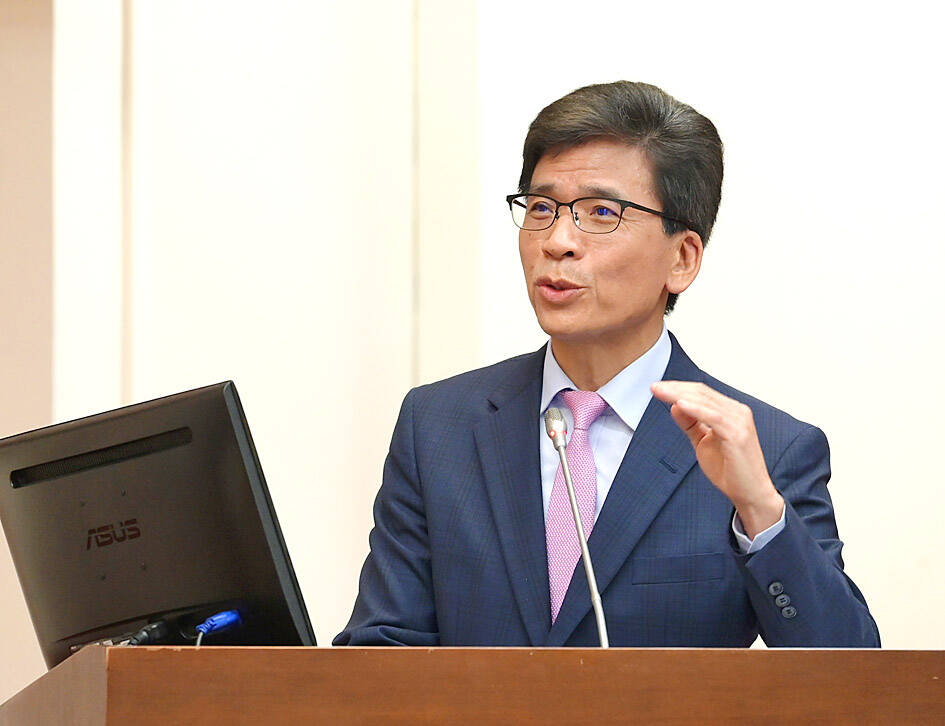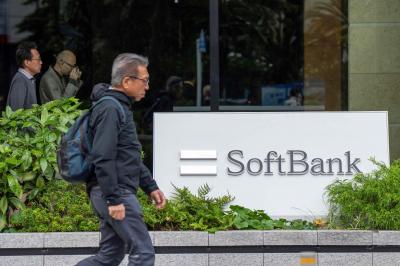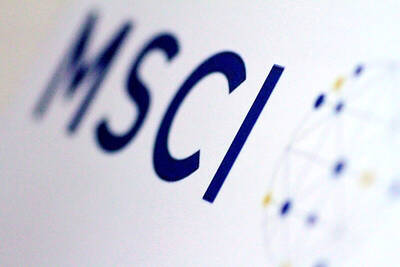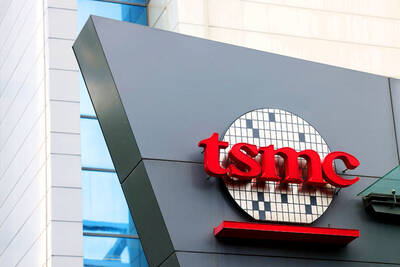Taiwanese insurers are facing difficult questions about the damage of recent swings in the New Taiwan dollar. Regulators might have a partial solution: letting firms change how they calculate the value of foreign currency assets.
The Financial Supervisory Commission (FSC) is considering allowing insurers to use six-month average exchange rates when they calculate risk-based capital in their semiannual reports, a shift from the current system where insurers use exchange rates on the final day of reporting.
The change could ease pressure on the US$1.2 trillion insurance sector, whose huge exposure to foreign assets came into the spotlight earlier this month after a rapid surge in the NT dollar against the greenback.

Photo: Wang Yi-sung, Taipei Times
“This will offer some breathing space for selected lifers where risk-based capital is close to the regulatory requirement,” Societe Generale SA Greater China economist Michelle Lam (林雪潔) said.
Still, the currency was likely to appreciate further against the greenback, meaning insurers would not entirely be spared the need to hold more capital, she added.
The change is still being considered by the commission, but FSC Chairman Peng Jin-lung (彭金隆) told lawmakers yesterday that the regulator was “inclined to agree with the proposal from the life insurance association” to switch to six-month exchange rates for the calculation.
“We’ll prioritize stability in the market and a smooth transition to the new capital requirements rules in 2026,” he said, adding that the regulator would make a decision on easing the rule by the end of next month.
Peng told a news conference on Tuesday that Taiwan’s insurance companies have enough cash on hand, and would not have liquidity issues.
The NT dollar’s more than 8 percent surge against the greenback over the past month has forced local insurers to either pay up to hedge against further currency gains or face the risk of growing paper losses on their approximately US$780 billion in foreign assets, most of which are in US dollars.
Local insurers have been divided on how best to respond to the currency volatility.
Taiwan Life Insurance Co (台灣人壽) chairman Paul Hsu (許舒博) in an interview last week said that the currency swings were causing him sleepless nights.
His firm is considering diversifying its investments across different currencies and issuing more US dollar-denominated policies to lower the risk of currency mismatches, he said.
Fitch Ratings on Friday last week revised its outlook for the life insurance sector to “deteriorating” from “neutral,” adding that exchange rate movements might affect Taiwanese life insurers’ capitalization and earnings.
Insurers are likely to hedge more of their foreign currency assets in response to the recent volatility, Fitch said.
The NT dollar yesterday edged 0.14 percent higher against the greenback to close at NT$29.910 in Taipei trading.

PERSISTENT RUMORS: Nvidia’s CEO said the firm is not in talks to sell AI chips to China, but he would welcome a change in US policy barring the activity Nvidia Corp CEO Jensen Huang (黃仁勳) said his company is not in discussions to sell its Blackwell artificial intelligence (AI) chips to Chinese firms, waving off speculation it is trying to engineer a return to the world’s largest semiconductor market. Huang, who arrived in Taiwan yesterday ahead of meetings with longtime partner Taiwan Semiconductor Manufacturing Co (TSMC, 台積電), took the opportunity to clarify recent comments about the US-China AI race. The Nvidia head caused a stir in an interview this week with the Financial Times, in which he was quoted as saying “China will win” the AI race. Huang yesterday said

Japanese technology giant Softbank Group Corp said Tuesday it has sold its stake in Nvidia Corp, raising US$5.8 billion to pour into other investments. It also reported its profit nearly tripled in the first half of this fiscal year from a year earlier. Tokyo-based Softbank said it sold the stake in Silicon Vally-based Nvidia last month, a move that reflects its shift in focus to OpenAI, owner of the artificial intelligence (AI) chatbot ChatGPT. Softbank reported its profit in the April-to-September period soared to about 2.5 trillion yen (about US$13 billion). Its sales for the six month period rose 7.7 percent year-on-year

MORE WEIGHT: The national weighting was raised in one index while holding steady in two others, while several companies rose or fell in prominence MSCI Inc, a global index provider, has raised Taiwan’s weighting in one of its major indices and left the country’s weighting unchanged in two other indices after a regular index review. In a statement released on Thursday, MSCI said it has upgraded Taiwan’s weighting in the MSCI All-Country World Index by 0.02 percentage points to 2.25 percent, while maintaining the weighting in the MSCI Emerging Markets Index, the most closely watched by foreign institutional investors, at 20.46 percent. Additionally, the index provider has left Taiwan’s weighting in the MSCI All-Country Asia ex-Japan Index unchanged at 23.15 percent. The latest index adjustments are to

CRESTING WAVE: Companies are still buying in, but the shivers in the market could be the first signs that the AI wave has peaked and the collapse is upon the world Taiwan Semiconductor Manufacturing Co (TSMC, 台積電) yesterday reported a new monthly record of NT$367.47 billion (US$11.85 billion) in consolidated sales for last month thanks to global demand for artificial intelligence (AI) applications. Last month’s figure represented 16.9 percent annual growth, the slowest pace since February last year. On a monthly basis, sales rose 11 percent. Cumulative sales in the first 10 months of the year grew 33.8 percent year-on-year to NT$3.13 trillion, a record for the same period in the company’s history. However, the slowing growth in monthly sales last month highlights uncertainty over the sustainability of the AI boom even as